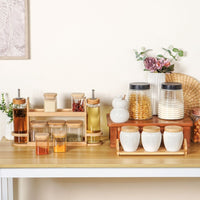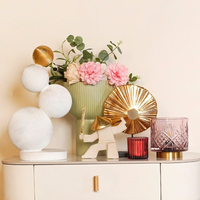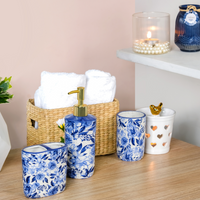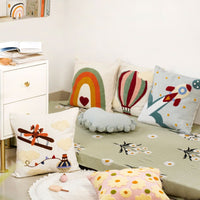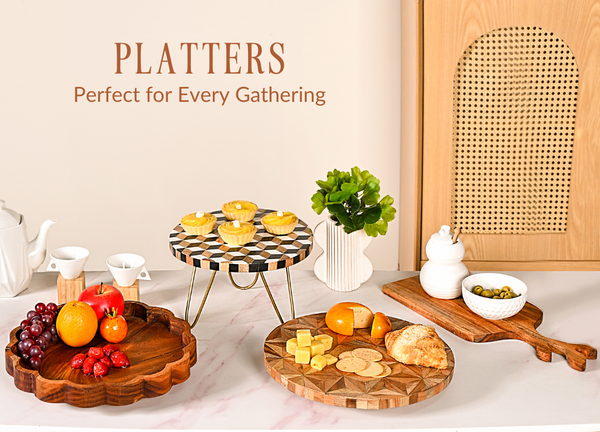Arranging furniture in a room can often feel like solving a puzzle, where the pieces need to fit together just right to create a harmonious and functional space. While traditional layouts have their place, sometimes thinking outside the box can bring new life and energy to your home. Here are some unconventional ways to arrange your furniture that will transform your space and showcase your unique style.
Tips On Arranging Furniture Differently
Furniture placement majorly depends on the direction of doors, windows, entryways, and exits—you need to ensure the furniture does not block access. Functionality and traffic are two important considerations for furniture placement. We have listed down 10+ furniture arrangement ideas to create a wow factor! Keep reading to know more.
1. Vertical Arrangements
Utilise vertical space to create unconventional arrangements. Tall bookshelves, stacked artwork, and hanging plants can draw the eye upward and make a room feel more expansive. Consider installing floating shelves or using tall cabinets to add height and dimension to your space.

2. Circular Layouts
Breaking away from traditional rectangular and square layouts, circular arrangements can create a more organic and fluid feel. Position chairs and sofas in a circle or semi-circle to encourage interaction and make the space feel more inclusive. This setup works particularly well in living rooms and can be centered around a round coffee table or an area rug.

3. Play with Symmetry and Asymmetry
Symmetrical arrangements create a sense of balance and order, but asymmetrical layouts can be equally compelling and dynamic. Try arranging a pair of chairs on one side of a sofa and a single chair or an ottoman on the other side. This approach can add movement and flow to the room while still maintaining a cohesive look.
4. Floating Furniture
Instead of pushing all your furniture against the walls, consider floating pieces in the middle of the room. This works particularly well in larger spaces and open floor plans. Create intimate seating areas by grouping furniture around a central point, such as a coffee table or rug. This arrangement encourages conversation and makes the space more inviting and well-defined.

5. Diagonal Placement
Placing furniture diagonally in a room can create a dynamic and interesting layout that breaks away from the conventional straight lines. Diagonal arrangements can make a room feel larger and more open by guiding the eye along the longer dimensions of the space. For example, try angling your sofa and coffee table towards the corners of the room. This can create a cosy nook and add visual interest.

6. Open Shelving as Dividers
Instead of traditional room dividers, use open shelving to separate spaces while maintaining an open, airy feel. This works well in studio apartments or open-concept homes. The shelves can provide storage and display space for books, indoor planters, and decorative items, adding functionality and style.

7. Repurpose Furniture
Think about how you can use furniture in unexpected ways. A dining table can double as a desk, a console table can serve as a bar, and a bench can act as a coffee table. Repurposing furniture not only maximizes functionality but also adds a unique twist to your decor. Look for pieces that can serve multiple purposes to make the most of your space.

8. Use Area Rugs Creatively
Area rugs are more than just floor coverings; they can help define and separate spaces within a room. Try layering rugs or using them to delineate different zones, such as a reading nook or a dining area within an open-plan living space. Choose rugs with bold patterns or vibrant colours to add an extra layer of visual interest.

9. Mix and Match Styles
Combining different styles of furniture can add character and depth to a room. Don’t be afraid to mix modern pieces with vintage finds or blend different textures and colours. This eclectic approach can create a personalized and visually stimulating environment. For instance, pair a sleek, contemporary sofa with a rustic wooden coffee table and a few bohemian-style cushions.
10. Dimensions for Living Room Furniture Arrangements
One of the secrets to learning how to arrange furniture is making sure you leave enough space between pieces. Allow 30 inches between furniture that you need to be able to walk around, and maintain 14 to 18 inches between a coffee table and sofa so drinks are within reaching distance. This rule still applies when planning a large living room furniture arrangement, because if a piece of furniture is too far away, it might look like it's floating in the room without purpose.
11. Furniture Arrangement For An Irregular Room
In an irregular room with one wide traffic lane, consider using the perimeter of the room for a computer desk and storage console. Choose chairs with casters so they're easy to move. Float the furniture to focus on the fireplace and the television. Ensure that the living room furniture is arranged near both the corner fireplace and television.
Conclusion
Arranging furniture unconventionally allows you to express your creativity and tailor your space to fit your lifestyle and aesthetic preferences. By experimenting with different layouts and thinking outside the box, you can create a unique and dynamic environment that reflects your personality and enhances the functionality of your home.
Also visit: https://nestasia.in/collections/soft-furnishings


